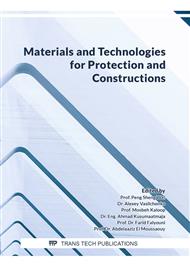p.73
p.79
p.85
p.93
p.99
p.105
p.113
p.122
p.135
Printability and Warpage Evaluation of Polypropylene/Nano Precipitated Calcium Carbonate Composite Prepared by Extrusion-Based 3D Printing
Abstract:
Polypropylene (PP) is a promising material for extrusion-based additive manufacturing due to its low cost, chemical resistance, good mechanical properties, versatile, and can be applied in various industrial applications. Recent research has focused on addressing the warpage issue in 3D printing of PP filaments. The effect of environmental conditions and loading of nanoprecipitated calcium carbonate (NPCC) in the pristine polypropylene to decrease warpage using the Fused Deposition Modelling (FDM) printing technology was studied. PP-NPCC composite filaments containing 5, 10, and 15 NPCC (wt%) were prepared using the twin-screw extruder. The printability, physicochemical, and mechanical properties of the PP-NPCC blends were determined. Based on the results, the incorporation of NPCC has contributed to the improvement of 3D printability and warpage in the PP-NPCC composite. At controlled environmental conditions, the filament was printable and the warpage was decreased by 44% at 10% NPCC loading. At the same concentration, there was a 30% increase in compressive strength and 43% increase in elastic modulus of the 3D printed parts.
Info:
Periodical:
Pages:
99-104
Citation:
Online since:
July 2022
Price:
Сopyright:
© 2022 Trans Tech Publications Ltd. All Rights Reserved
Share:
Citation:



